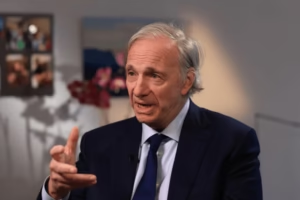Once considered health conditions of the wealthy, non-communicable diseases (NCDs) such as hypertension and diabetes are now spreading rapidly across India’s low-income and working-class populations, particularly in rural and semi-urban areas.
Everyday Stories of Silent Suffering
Take the example of Mohan Ahire, a gardener in Pune. For months, he dismissed the constant heaviness in his head as fatigue. But one summer morning, after returning from the market, he fainted and woke up to discover partial paralysis on the right side of his body. Doctors later confirmed that high blood pressure had triggered a stroke.
Similarly, Bahinabai Gaekwad, a 56-year-old sweeper in Mann village, collapsed suddenly at work. The Primary Health Centre nearby revealed that she had long been living with untreated hypertension, which ultimately caused a fatal cardiac arrest.
The greatest challenge is that most patients are unaware of their condition until it is too late.
For example, Praful Mahato, a migrant worker from Odisha employed at a roadside eatery in rural Pune, ignored his dizziness and weakness, assuming they were the result of long work hours. A free medical camp revealed that he was both hypertensive and diabetic. With medication, his condition is now under control.
Another case is Jagdish Mondol, who discovered he had both diabetes and high blood pressure only when he went in for a hernia surgery. Years of blurred vision and difficulty walking had gone unaddressed. Now, with treatment, his health is improving.
On the other hand, Lalita Parshuram Jadhav, a 40-year-old construction worker, took initiative when persistent leg pain worsened. Tests confirmed high sugar levels and hypertension, and she is now undergoing treatment.
These real-life stories mirror a nationwide health crisis.
The Growing Epidemic
India is witnessing a sharp increase in lifestyle-related illnesses. Hypertension and diabetes rank among the top 10 NCDs causing premature deaths worldwide. The two are deeply interconnected—those with high blood pressure are at greater risk of developing prediabetes and diabetes.
The World Health Organization (WHO) estimates that 1.28 billion adults globally (aged 30–79) suffer from hypertension, with two-thirds of them living in low- and middle-income nations. Yet only 21% have their condition under control, while nearly half are undiagnosed.
India alone has:
- 77 million adults living with diabetes (Type 2)
- 25 million pre-diabetics at risk of progressing to full-blown diabetes
- More than 43 million undiagnosed diabetics
Between 2009 and 2019, the prevalence of diabetes in India rose from 7.1% to 8.9%. Projections suggest that Impaired Glucose Tolerance (IGT) could rise from 25.2 million cases today to 35.7 million by 2045.
Deaths are disproportionately occurring among those aged 30–70 years, leading to immense human and economic costs.
Local Reality: Semi-Urban India
In villages like Mann (Pune district) and Mullaheera (Haryana), health workers report alarming figures:
- Around 28% of adults have hypertension
- About 12% are diabetic
Dr. Sona Deshmukh of the People-to-People Foundation, which partners with India’s Viksit Bharat @2047 initiative, explains:
“Diabetes is more common among older adults, but hypertension is increasing at alarming rates among younger people.”
Why the Sudden Rise?
Doctors point to multiple socio-economic and lifestyle shifts:
- Dietary changes: Once dependent on traditional home-cooked meals like millets and lentils, rural populations now consume cheap fried snacks and sugary drinks, often cooked in reused oil.
- Addictions: Tobacco chewing and alcohol consumption are widespread.
- Stress: Job insecurity and the pressures of industrialization add psychological strain.
- Lifestyle: Late-night TV, irregular meals, caffeine-heavy diets, and lack of exercise lead to poor sleep and rising stress.
Dr. Sundeep Salvi of the PURE Foundation highlights another critical factor: air pollution. He explains that both outdoor (from crop burning) and indoor (from biomass fuels) pollution elevate risks, with indoor air quality often 5–10 times worse than outdoors.
The Medical Risks
If ignored, these “silent killers” can cause severe and irreversible complications:
Hypertension can lead to:
- Heart attacks and heart failure
- Stroke due to burst or blocked arteries
- Kidney damage and eventual failure
- Sudden cardiac death from irregular rhythms
Diabetes can cause:
- Nerve and kidney damage
- Blindness and vision loss
- Higher susceptibility to strokes and heart disease
- Multiple organ failure in severe cases
The Deeper Roots: A Lifelong Cycle
Prof. Chittaranjan Yajnik of Pune’s KEM Hospital links diabetes risk to poor fetal growth. Babies born underweight, he argues, develop weaker organs such as the pancreas and liver, making them more vulnerable when exposed to calorie-rich diets later in life.
His studies show that two-thirds of prediabetic girls and one-third of prediabetic boys were underweight at birth, suggesting that India’s high rates of low-birthweight babies (18.2%) are silently fueling today’s epidemic.
The Way Forward
The Government of India has begun tackling the crisis through several initiatives:
- Maternal and child health programs focusing on nutrition, immunization, and safe deliveries.
- Wellness sessions at PHCs with regular screenings for early detection of hypertension and diabetes.
- Yoga and lifestyle counselling, promoted nationally through events such as International Yoga Day.
Dr. Deshmukh adds:
“Awareness, prevention, and lifestyle modification are key. Regular checkups, healthier diets, hydration, and exercise can help reduce risks.”
Conclusion
Hypertension and diabetes are no longer “diseases of affluence.” They are steadily creeping into India’s villages and working-class communities, fueled by lifestyle changes, stress, poor nutrition, and environmental challenges.
Unless addressed through early detection, sustained awareness, and preventive healthcare, these silent killers will continue to rob millions of their health and livelihoods.















